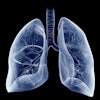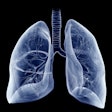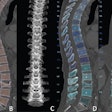Hoping to avoid the rash of radiation overexposures that shook California radiology like an earthquake a few years back, the state of Texas has decided to implement its own radiation exposure rule beginning May 1.
Unlike the California law, however, Texas will administer its new regime as an administrative directive by the Texas Department of State Health Services (DSHS).
Texas Administrative Code rule §289.227 includes guidelines for radiation reporting, training personnel, and establishing acceptable dose thresholds, according to department spokesperson Christine Mann.
"The major thing in the new rule would be requiring healthcare providers that perform fluoroscopically guided interventional procedures and CT to develop a radiation protocol committee," Mann told AuntMinnie.com. "Another change is the requirement for radiation safety awareness -- that's for physicians or those delegated by a physician to perform interventional fluoroscopy or CT, but it doesn't apply to radiologists or oncologists."
By May 1, all healthcare providers using fluoroscopy and CT must have a radiation program in place, the department wrote in its announcement of the new program on March 1.
"The program must record patient radiation dose on all CT and fluoroscopy exams ([CT dose index], [dose-length product], and air kerma values), establish and manage radiation dose thresholds on all CT and fluoroscopy procedures, notify patients of dose threshold breech, and provide good radiation safety training to all staff members performing CT and fluoroscopy procedures," DSHS wrote.
The actual dose for the patients need not be calculated for each procedure, but the radiologist is responsible for maintaining a record of the radiation output information, and using that information to estimate the radiation dose, Mann explained.
"They have to record that and make sure it's documented in the patient health record," Mann said. "They have to maintain a record of the radiation output, and then use that data to estimate the radiation dose to the skin if necessary."
In addition to all CT scans, common fluoroscopy procedures covered by the law include the following (without limitation):
- Transjugular intrahepatic portosystemic shunt (TIPS) creation
- Embolization of any lesion in any location
- Stroke therapy
- Biliary drainage
- Angioplasty
- Stent-graft placement
- Carotid stent placement
- Chemoembolization
- Angiography and intervention for gastrointestinal hemorrhage
- Radiofrequency ablation
- Complex placement of cardiac electrophysiology devices
- Percutaneous coronary interventions
As for CT, CT dose index volume (CTDIvol) and dose-length product (DLP) are the most common output measures that require reporting under the new regime.
In the event a patient receives an overdose, the provider is required to report the incident to Texas DSHS according to Texas Administrative Code §289.231(hh) and (ii). There are no new reporting requirements associated with the rule taking effect May 1, Mann told AuntMinnie.com.
Different rules apply to oncology centers that use CT only for simulations in advance of treatment.
"We're trying to be proactive for the health and safety of patients to try to prevent radiation overexposure," Mann said. "There were accidents in California where this type of thing happened, and we're trying to prevent that by requiring healthcare facilities to establish a radiation protocol committee, and also to record the radiation output for each patient."
In February 2008, Cedars-Sinai Hospital in Los Angeles overexposed more than 200 patients during routine brain profusion CT scans -- overexposures that went undetected for more than 18 months.
The incidents received national attention and resulted in California's dose-reporting law that took effect last July, along with similar dose-reporting laws in other states and nationally.
A PDF file containing frequently asked questions about the new rule can be accessed here.
A copy of the new rule can be found here.



















